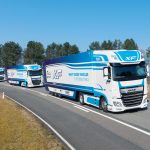Driveline dilemma!
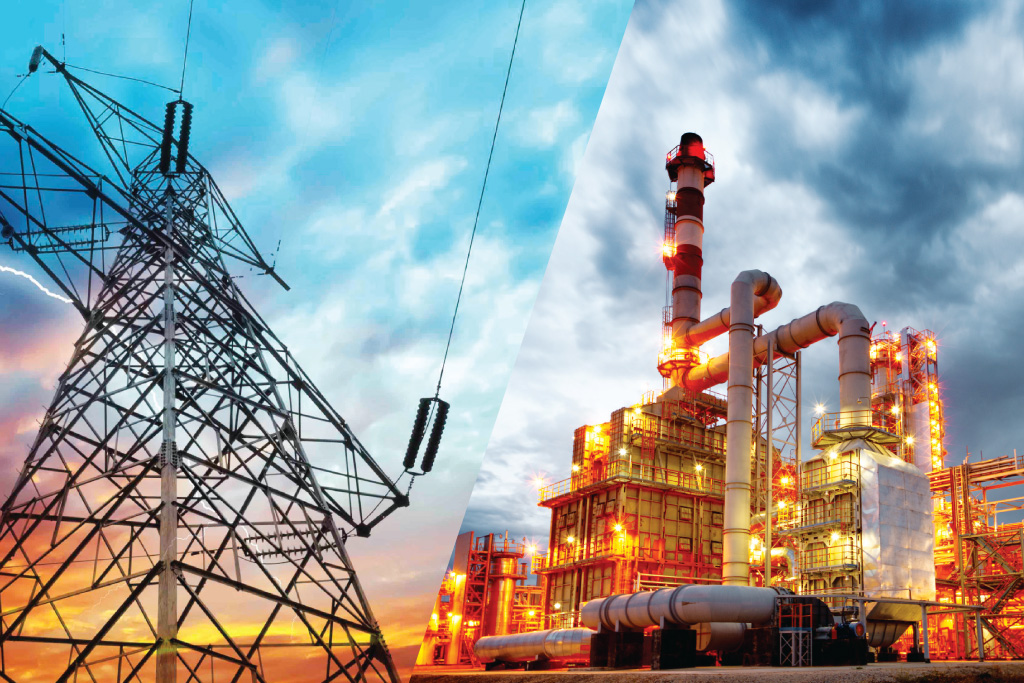
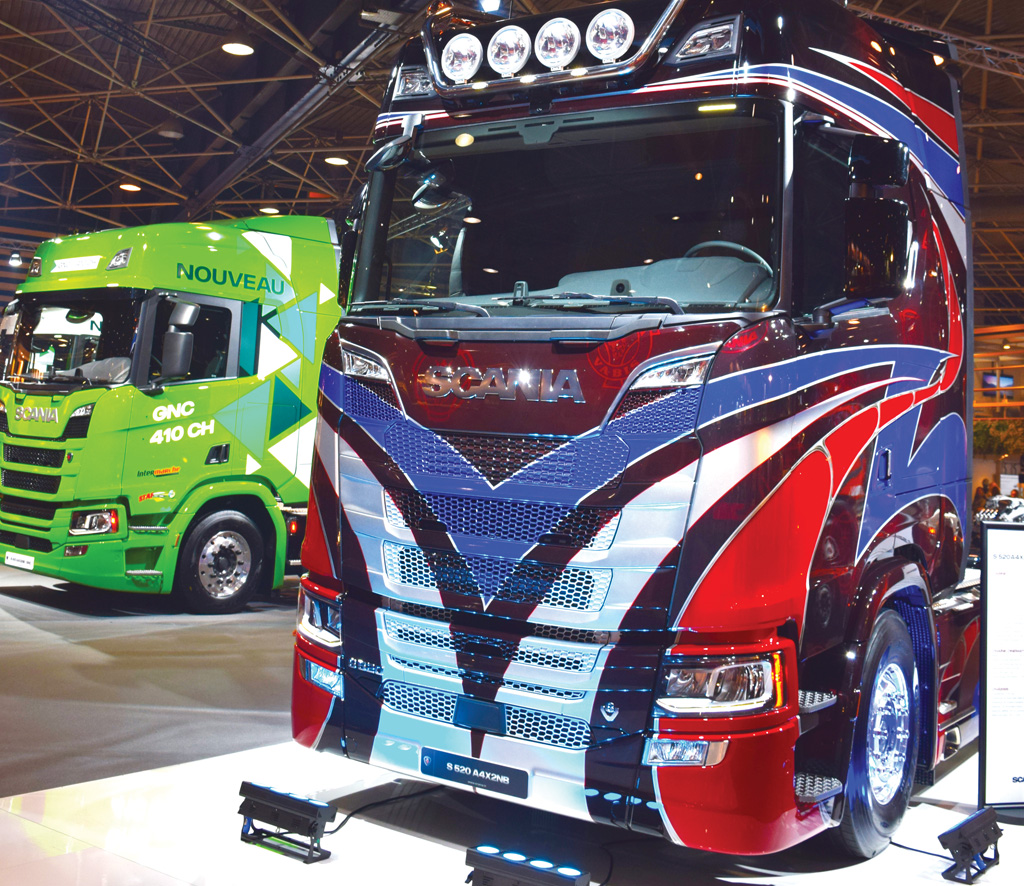
Solutrans was expected to be all about e-mobility, and, of course, this subject did feature prominently – But it wasn’t the sole star of the show. CHARLEEN CLARKE reports from Lyon.
Solutrans could not have happened at a more opportune time. Its doors opened just days after Elon Musk launched his Tesla electric truck (see page 40 for details). This was the topic of discussion on most stands, with many industry observers concluding that Musk had lost the plot.
Whereas industry captains agreed that the Tesla electric truck was “quite ridiculous” (to quote one CEO), they could not reach consensus on one other topic: alternative drivelines. Some companies maintain that the future lies in e-mobility, while others insist that gas is a far more viable alternative.
This made for heated debate. In fact, at a conference on alternative drivelines arranged exclusively for members of the International Truck of the Year (IToY) jury, industry representatives were almost at blows over this very subject!
The case for gas
Volvo promoted the use of gas at Solutrans, introducing Euro-6-compliant heavy-duty trucks running on liquefied natural gas (LNG) or biogas. They come with 313 kW (420 hp) or 343 kW (460 hp) engines.
Henrik Persson, business manager long haul at Volvo Trucks, spoke at the IToY conference, and he was at pains to mention that these trucks are completely different to gas trucks of old. “Instead of an Otto cycle engine, which is the conventional solution for gas-powered vehicles, the Volvo FH LNG and Volvo FM LNG are powered by gas engines utilising diesel cycle technology. This has never been done before,” he stressed.
Accordingly, these trucks have the same performance, driveability and fuel consumption as Volvo’s diesel-powered models. Speaking of diesel, they also have a small diesel tank, because diesel is used for ignition.
The CO2 emissions of the new trucks are 20 to 100 percent lower than that of diesel, depending on the choice of fuel (biogas is the greener of the two). “They have the power of a diesel truck, although it feels quieter. Furthermore, these new trucks have a driving range of up to 1 000 km,” Persson told the IToY jury.
If Volvo has its way, gas-powered trucks will be the way of the future, for now. “Natural gas offers clear climate upsides. It is competitively priced in many countries and there are sufficient reserves to justify large-scale use,” explained Lars Mårtensson, director environment a nd innovation at Volvo Trucks.
Fellow Swedish company, Scania, also nailed its colours to the gas mast at Solutrans, launching the OC13 – a six-cylinder, 13-litre gas engine with an output of 306 kW (410 hp) and 2 000 Nm. The OC13 can be used in a variety of applications, from construction sites to long-distance transportation.
The engine is based on Scania’s existing 13-litre diesel engine. Unlike the Volvo engine, it uses the Otto principle, with spark plugs and complete combustion (combustion is initiated using spark plugs, as is the case with petrol engines, and pre-mixing of the fuel takes place upon entry into the cylinders).
It does, however, share in the Volvo’s driveability; this is said to be just as a good as diesel. The engine can run on LNG or compressed natural gas (CNG). With the former, a range of 1 100 km is possible; the CNG engine has a range of up to 500 km.
Scania has high hopes for its new gas engine, which is a real alternative to diesel. “We are seeing that a rapidly growing infrastructure goes hand in hand with an increasing interest among potential customers to start using all the gas that is available in a number of European markets. This includes France where there is great demand for sustainable solutions with all the benefits of CNG and no disadvantages,” said Henrik Eng, product director urban at Scania Trucks.
Iveco is yet another company that is flying the gas flag. This certainly didn’t start at Solutrans; the Italian company has long been a champion of gas. It’s meeting with considerable success in this regard. At Solutrans, for instance, Iveco signed a massive deal with Jacky Perrenot, one of the largest transport companies in Europe.
The transport operator signed an order for 250 Stralis NP trucks at the stand; it’s committed to purchasing a whopping 1 000 Iveco natural gas vehicles by 2020. Recently, Iveco launched a 343 kW (460 hp) derivative – which is the model ordered by Jacky Perrenot. We drove the vehicle at Solutrans, and it’s utterly incredible. We were especially impressed at the quietness of the engine. Importantly, it feels just like a diesel with plenty of torque on hand.
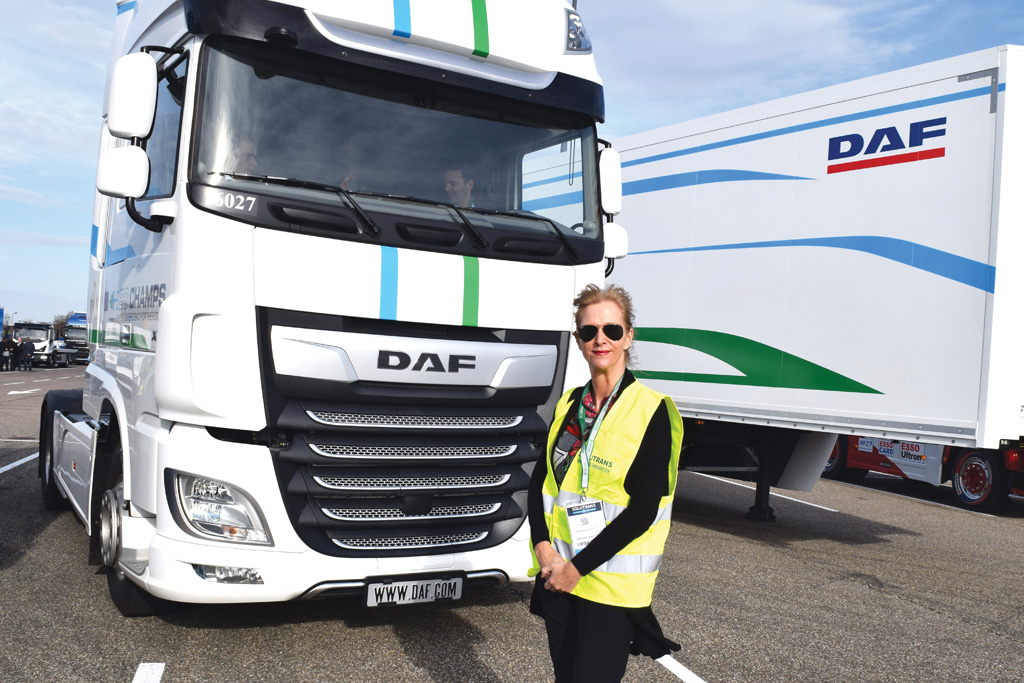
Clement Chandon, gas business development manager at Iveco, addressed the IToY conference and made no secret of the fact that he doesn’t see an electric truck – such as the Tesla – as a real alternative to diesel.
“I can speak very frankly about this. At Iveco we do hybrids. We are number one in buses in this regard (we have 1 500 hybrid buses running in Europe). We have pure electric buses and the electric Daily. We have produced vehicles with fuel cells. We also produce bioethanol vehicles in Brazil and we have biodiesel vehicles. We are doing LNG and CNG, so we know exactly what we are talking about, what it costs and what our clients want.
“If you want a real alternative, you don’t need an electric truck. The first thing you need to do is to beat a diesel-powered vehicle. And beating diesel is extremely difficult! We have invested billions of euro year after year in making the diesel engine the best it can possibly be. It’s incredibly efficient; diesel is cheap and it’s available everywhere. A barrel of diesel costs $52. A barrel of mineral water, produced here in the Alps, costs €160! You cannot claim to have a meaningful alternative to diesel unless you have beaten its total cost of ownership (TCO) – and that’s incredibly difficult,” he pointed out.
Chandon revealed that Iveco has made mistakes in the past. “We have done hybrids on trucks and it was a mistake; it was a failure. First, because the TCO was not there, and then because the versatility was not there. A hybrid only works in cities. The day that your customer needs to take the truck out of the city, you rapidly destroy the reason why the customer bought the truck,” he pointed out.
A refuelling network is also very important, he stressed. “So, maybe you have found something that beats diesel; it’s cheaper and the TCO is right, but it’s nothing if you don’t have a sustainable refuelling network. That network cannot be established at a cost of billions of euro in taxpayers’ money. The investment in an electricity network to charge electric trucks is huge. Who is going to pay for that?
LNG offers a feasible solution. Take one LNG dispenser, which dispenses 150 litres of LNG per minute – it will deliver more energy than all the Tesla fast-charging stations across France!” Chandon told jury members.
There are several major challenges with e-mobility, Chandon claimed. “With electricity, you lose payload and versatility and you’re completely lacking in infrastructure for refuelling. And, of course, it costs three times as much as a diesel truck. Is an electric truck an alternative to diesel? No, I’m sorry, Mr Elon Musk, this is not an alternative today and it won’t be for many years,” he insisted.
In conclusion, Chandon stressed that, sans customers, the cleanest truck on earth has zero positive impact. “We have been selling the electric Daily for eight years and we have just passed 100 unit sales. This is the reality of electric vehicles of 3,5 t and above! The problem with electric vehicles is not the range; it’s the cost,” he stressed.
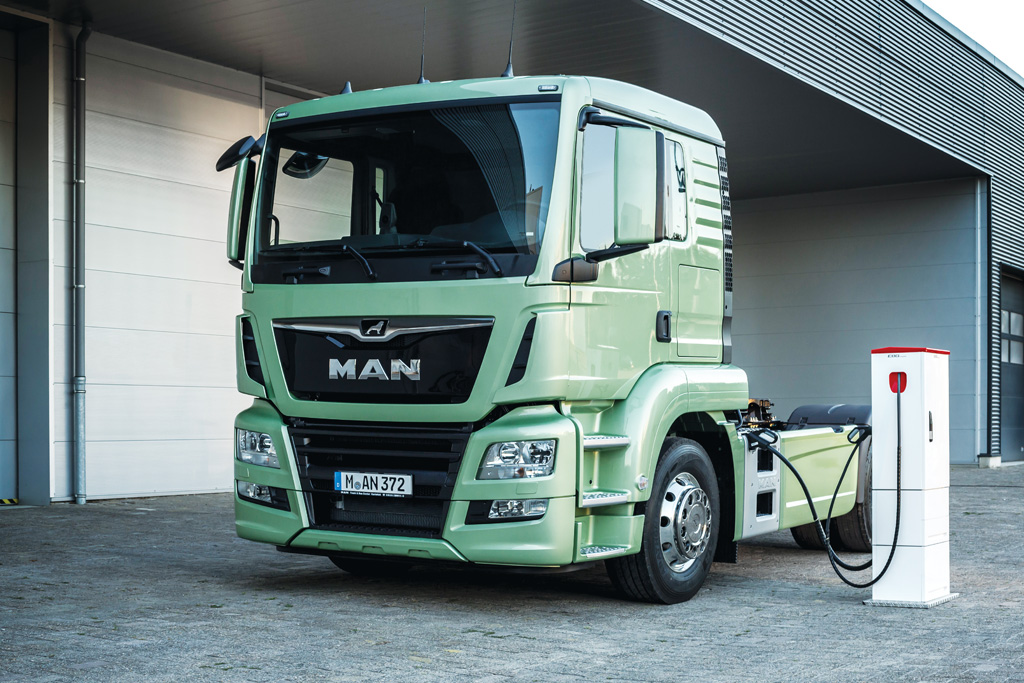
Battery Costs to go down
According to Marco Bassi, general manager sales and marketing for Europe at Meritor, those costs are going down. “In 2009, a 100-kWh battery pack cost $120 000. Today, that same battery pack costs $25 000. In 2025, that battery pack will cost $15 000,” he predicted.
Batteries are becoming lighter and more efficient, too. “In 2010, a 100-kWh battery weighed about 1 000 kg. Today, that same battery pack weighs about 667 kg. In 2025, that battery pack will weigh about 400 kg,” Bassi told jury members. “This is important on a truck because a lower battery weight means more payload.”
He stressed that change in society is happening faster than ever. “It took 75 years to reach 50-million telephone users, 38 years to reach 50-million radio users, 13 years to reach 50-million television users, four years to reach 50-million internet users, 3,5 years to reach 50-million Facebook users and just 35 days to get to 50-million Angry Birds users. Technology is moving very fast, and electrification will reflect this trend,” he revealed.
Electricity is everything
Not surprisingly, given this scenario, some companies are convinced that e-mobility is the way of the future. The two leading German manufacturers – Daimler and MAN – are investing billions of euro in this technology.
We’ve written about Daimler’s e-vehicles in the pages of FOCUS extensively. While the company didn’t debut any new e-vehicles at Solutrans and didn’t speak at the IToY conference, it announced plans to offer all its commercial van model lines with an electric drive at a separate event in Berlin.
Meanwhile, back at Solutrans, MAN made big news with its eTruck (which we first saw at the IAA last year), and Felix Kybart, head of alternative drives at MAN, was there to speak at the IToY conference. He revealed that the company has already built ten of these trucks, which are being tested. “We have made up our mind. We’re focusing on electric, not on bridging technologies,” he told jury members.
Kybart revealed that the company adopted an unusual methodology when preparing for the launch of the eTruck. “We have 102 years of experience in trucks and buses – but not in electric trucks and buses. So, what did we do? Well, normally we would develop a product and then launch it to market.
“This time around, we took a completely different approach. We decided to involve customers a lot earlier. We found an organisation called the Council für Nachhaltige Logistik, or Council for Sustainable Logistics (CSL), which is located in Austria, and decided to partner with this organisation – because its goal is to seek innovative and sustainable logistics solutions,” he explained.
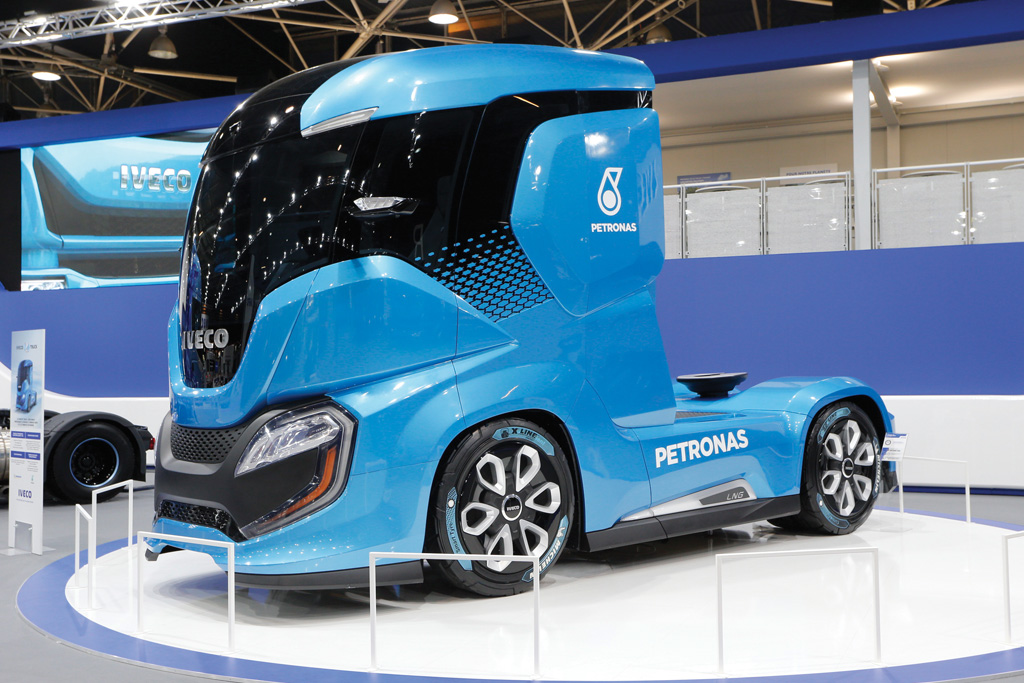
MAN and the CSL signed a partnership agreement in February this year, and the two parties have cooperated when it comes to the development of the eTruck, which is based on the TGM and has a gross vehicle mass of between 12 and 26 t. It features the same payload as diesel models, yet it boasts a virtually silent, emission-free performance.
According to Kybart, the first nine eTrucks with four different body applications (refrigerated trailer, swap container, beverage body and a semitrailer combination) will be delivered to nine companies, all members of the CSL, in three cities during December.
“This will allow us to gain broad and deep field experience. We will be testing 4×2 derivatives, which have a 149-kWh battery and a range of up to
130 km, as well as a 6×2 with a battery of 223 kWh and a range of up to 200 km. Additionally, we have formed a new department called MAN Transport Solutions, which has been created specifically to support these customers,” he told jury members.
Serial production of the eTruck will commence next year, with the first deliveries taking place at the end of 2018. Customers will be able to specify the number of batteries that they want fitted in the eTruck (some customers may not require a range of 200 km, for instance, meaning they can save on the cost of batteries).
DAF also appears to be a fan of e-mobility, although it’s not nearly as adamant as its German counterparts that this is the solution. In fact, speaking exclusively to FOCUS at Solutrans, Preston Feight, president of DAF, stressed that the company was still considering all its options.
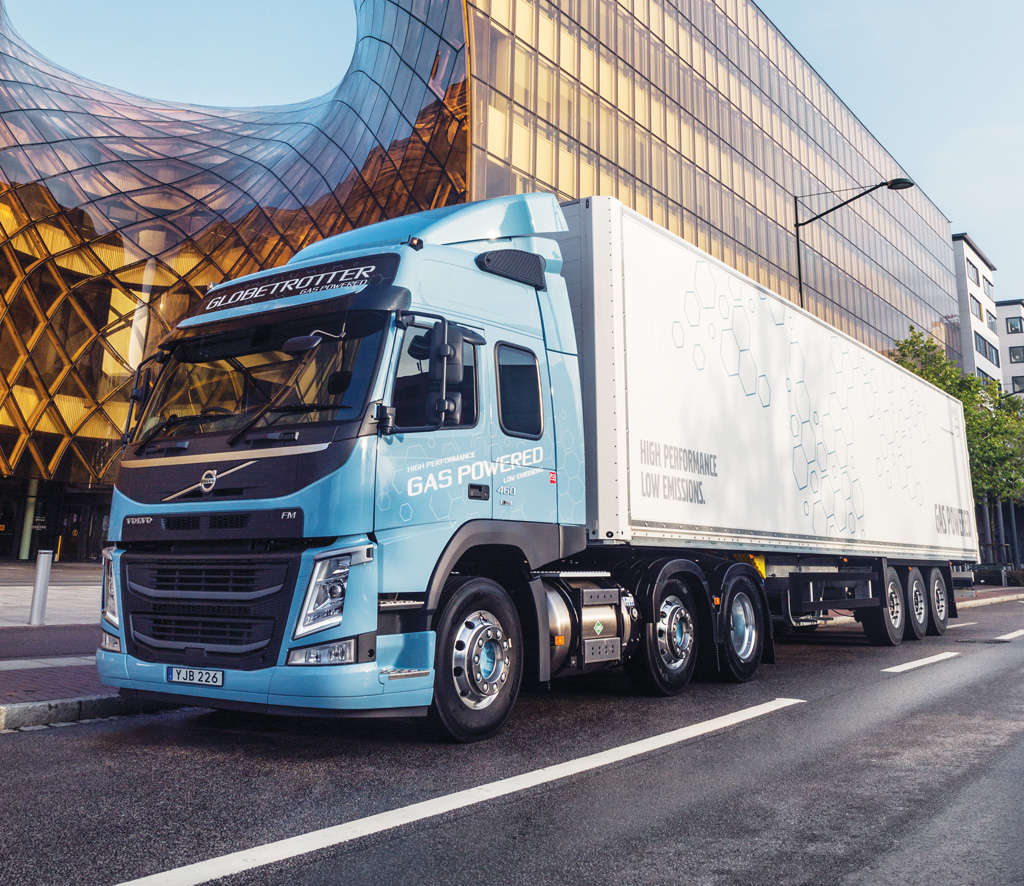
“We believe in adopting a balanced approach. We have electric vehicles that we have run and continue to develop. We used to sell hybrid vehicles, but commercially they didn’t make sense for our customers. So, we didn’t continue with this, because customers didn’t want to buy them. I think there are going to be incremental gains along the way to electric – more than just a change to full electric.
“If I put myself in the customer’s shoes, gas can be complicated, especially if it’s a multi-fuel solution with diesel and gas. The energy density of LNG means it has some limitations. It’s a cryogenic, so it’s super cold. Workshops have to be treated differently for venting of the gas as it warms to ambient temperatures and that has cost implications.
“These are not insurmountable problems, but we cannot lose sight of them. This is an exciting time for the industry.At Paccar we are constantly considering alternative drives, but we haven’t decided on a definite path forward,” he told FOCUS.
Ron Borsboom, management board member and chief engineer at DAF, addressed the IToY conference, and he stressed that manufacturers need to look at every single part of a truck in order to make vehicles greener – not just the engine.
“Hybrid technology or electrification can help. The business case for electrification is improving, but we need standardisation in terms of components such as batteries, e-motors and inverters, DC/DC converters, electric air compressors and electro steering pumps. We can use passenger car technology, for instance,” he pointed out.
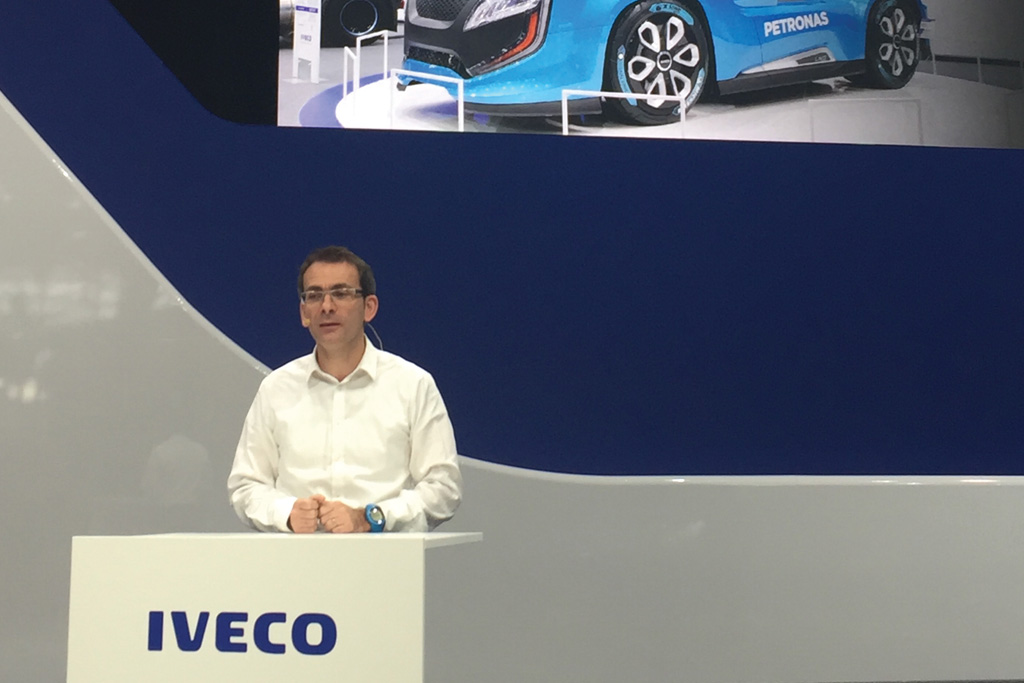
Later we drove a DAF concept truck that does exactly that. The vehicle in question is called the DAF Ecochamps, a vehicle that is the result of a European project (other manufacturers have participated in this project, too). This hybrid heavy-duty truck features the Paccar MX-11 330 kW diesel engine, which works with a 90 kW electric motor that hails from the BMW X5.
It has a battery with a capacity of 17,6 kWh. Auxiliaries include a DC/DC converter, e-air compressor and an electro hydraulic steering pump. Electricity is generated from waste heat. This study truck is very impressive – it’s a brilliant vehicle to drive; the only negative was the heavy steering. We cannot help but wonder if it will ever see the light of day.
Finally, we heard from Renault Trucks at the IToY conference, and it was interesting to hear the viewpoint of Francois Savoye, energy efficiency strategy director at the company. Renault does have gas offerings. We drove one such product, a CNG-powered 19-t 6×2 rigid. We were impressed with this innovative truck, which boasts a rear steering axle offering fantastic manoeuvrability, making it ideal for city deliveries.
Savoye insisted, however, that gas was not the way forward. “It remains a limited solution. When you compare the reality of emissions of gas and diesel … they are not so different. Does this justify a complete change in infrastructure? The end game will be electro-mobility; gas will just be a transitional solution. That’s why we’re focusing on electromobility.”
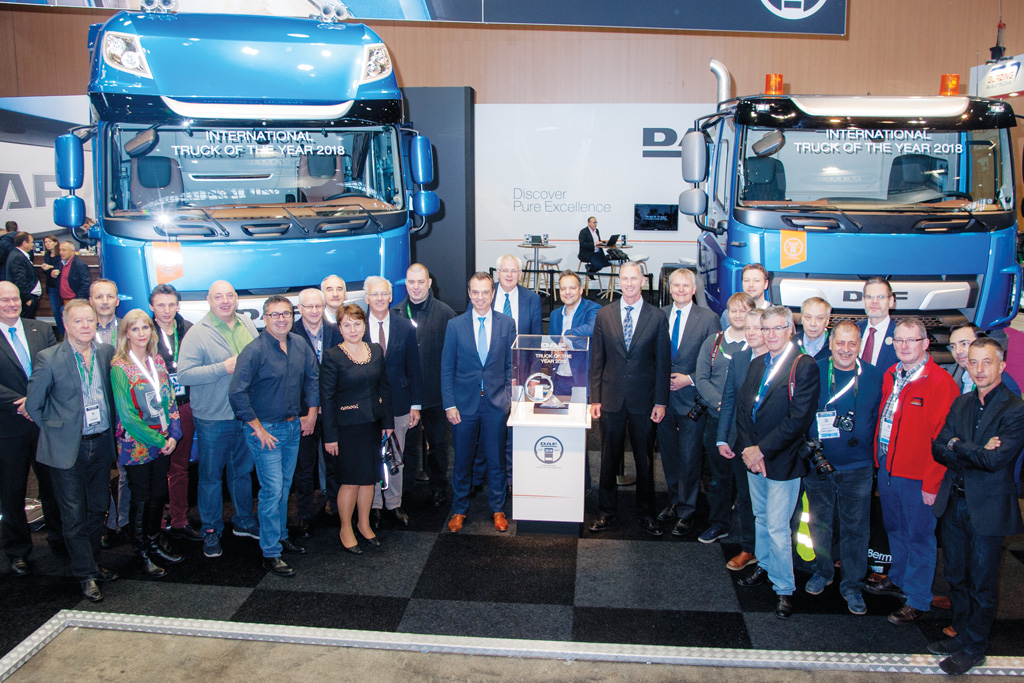
When will e-mobility come en masse? Savoye conceded that e-mobility has been “coming” for years. “We’ve been hearing this for 20 or 30 years. We have not had much commercial success in this sphere in the past. With our electric MiCity, we sold 40 trucks, so, it’s quite difficult to get the payback on the investment.
“However, the purpose wasn’t to make money, it was to learn. We wanted to understand how electromobility would impact and change the mindsets and the way trucks are used in the transport sector. The major change now is that costs are dropping, which means the electric truck is finally offering the opportunity for profitability.
“Our strategy is clear: we will be ready for 2020. We will come to market with a reliable and profitable electromobility offer by then,” he revealed.
So, there you have it. Gas is here – now. E-mobility is coming. Which technology will rule the alternative driveline roost? Even the experts in our industry cannot agree on this – so only time will tell.
Volkswagen wins Pickup Award
Volkswagen Commercial Vehicles was honoured with the International Pickup Award 2018 at a special gala ceremony attended by 1 500 representatives from the European commercial vehicle industry, which took place during Solutrans 2017.
Following an extensive group test drive programme, held over three days in Romania at the beginning of November, the Amarok V6 emerged as overall winner as voted by members of the International Van of the Year jury.
The fourth running of the biennial award pitted established players – the Toyota Hilux and Volkswagen Amarok – up against two newcomers, the Renault Alaskan and Mercedes-Benz X-Class.
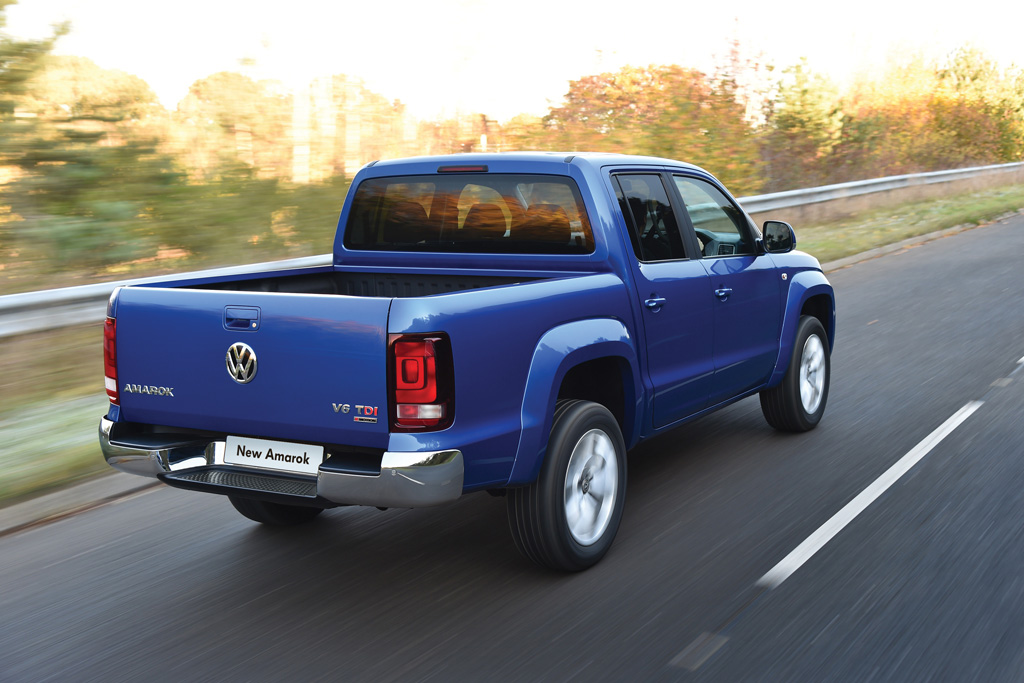
“Jury members adjudged the Amarok V6 to be the best all-rounder in a very close competition. The latest Volkswagen Amarok V6 scored 56 points with its new German rival, the all-new Mercedes-Benz X-Class, achieving 50 points. The current Toyota Hilux was not too far behind on 41 points.
“Marks were awarded based on powertrain efficiencies, load volume and capability, driver and passenger comfort and safety aspects, as well as low total cost of operation from a business point of view,” explained Jarlath Sweeney, chairman of the International Pickup Award jury.
Jury members selected the Amarok because of its clean-cut design, great fit and finish, spacious cab with modern layout, comfortable seats, unique eight-speed automatic and its powerful 3,0-litre V6 engine.
DAF claims title of world’s best truck!
DAF’s new XF/CF truck range has been elected International Truck of the Year for 2018. This award was also presented at the gala banquet at Solutrans.
With a winning score of 104 votes, in a neck-to-neck competition the new Dutch heavy-duty truck range fought off the strong challenge posed by Iveco’s Stralis NP long-haul 343 kW (460 hp) natural-gas model, which was second, and Scania’s XT construction range, which finished third.
In accordance with the IToY rules, the annual award is presented to the individual vehicle or model range introduced into the market in the previous 12 months that has made the greatest contribution to road transport efficiency, based on several important criteria. These include technological innovation, driver comfort, road safety, driveability, fuel economy, environmental “footprint”, and total cost of ownership.

The Truck of the Year jury members appreciated the new XF/CF’s energy efficiency features, which include improved combustion, a reduction in internal engine friction losses, engine down-speeding, intelligent auxiliaries, driveline component integration, different gear-shifting strategies, enhanced predictive features running on a new electronic architecture, as well as weight reduction in selected components such as the compact after-treatment system.
In particular, during a recent extended test drive in Belgium and the Netherlands, the IToY jury members praised the advanced characteristics of the latest XF/CF drivelines, which allow for longer fuel-saving “eco-roll” periods, due to the increased integration of the engine and automated-gearbox equipped with the latest GPS-based predictive cruise control function.
Summing-up the vote, International Truck of the Year chairman, Gianenrico Griffini, commented: “With the introduction of XF/CF series DAF has delivered a heavy-duty truck range that sets a new standard in terms of driveline energy efficiency and overall performance.”
Iveco wins Van of the Year
The Iveco Daily Blue Power was named as winner of the International Van of the Year 2018 at Solutrans.
The 25-member jury panel – consisting of light commercial vehicle magazine editors and journalists – awarded the Iveco Daily Blue Power 113 points with the new Ford Transit Custom as runner-up receiving 79 points. The other podium place went to Volkswagen Commercial Vehicles with its latest gas-powered Caddy TGI model.
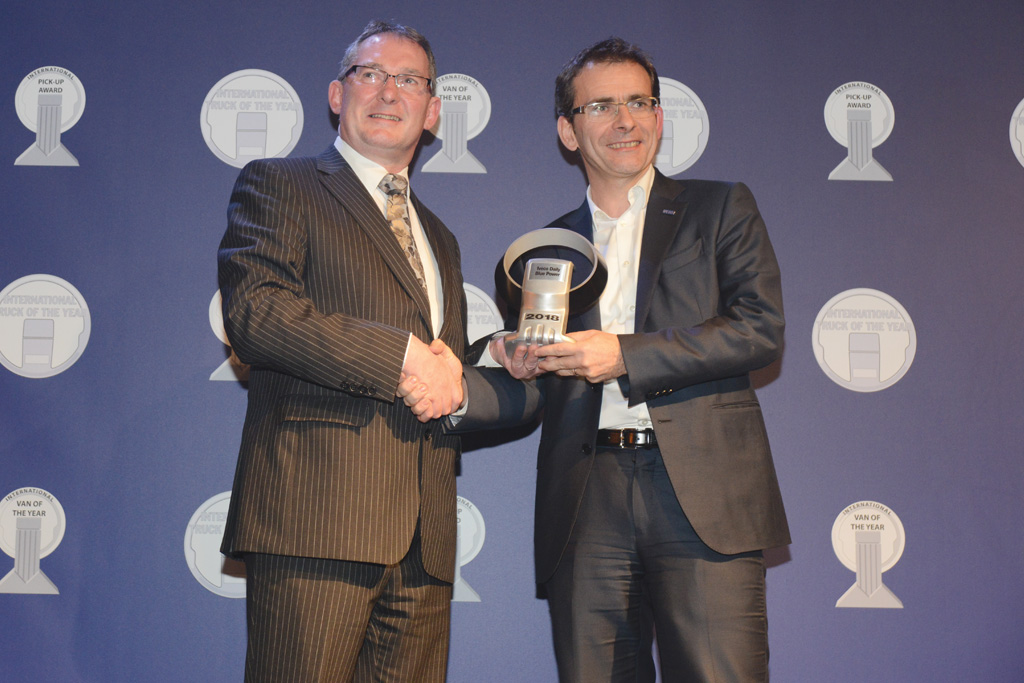
In electing the Daily Blue Power as International Van of the Year 2018, much praise was directed towards Iveco for producing a new range of highly sustainable light commercials with a choice of powertrains that reduce environmental impact.
With the Iveco Daily Blue Power, the Italian brand offers a choice of efficient viable power solutions such as the Real Driving Emissions (RDE) 2,3-litre Euro-6 diesel, a 3,0-litre natural gas engine with Hi-Matic automated transmission and an improved electric version.
According to Jarlath Sweeney, chairman of the International Van of the Year Jury, the award recognises the tremendous efforts made by Iveco to decisively contribute to the battle for clean air in our cities and CO2 emission reductions.
“Daily Blue Power in its electric, natural gas and most advanced diesel versions, is the first and only vehicle to offer three choices that anticipate regulations increasingly impacting access to urban centres. This secures customers’ investment and gives them the competitive advantage they need to develop their sustainable businesses,” he pointed out.
This is the third occasion that the Iveco Daily has won this award since its establishment in 1992, tasting victory in 2000 and more recently in 2015.
Published by
Charleen Clarke
focusmagsa

